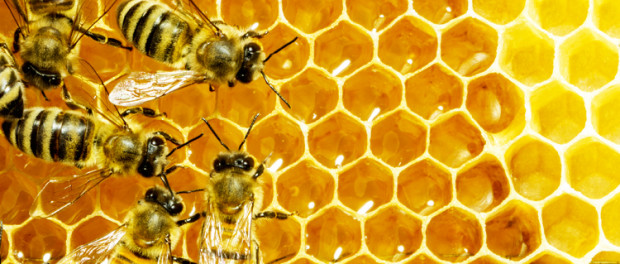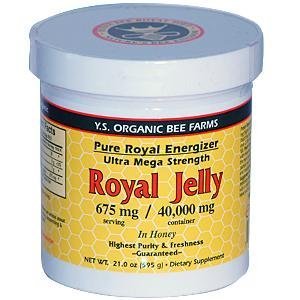Food Tricks to Use so You Don’t Get Sick in Winter

Dear reader,
Every year, most of us catch some kind of seasonal infection: cold, otitis, bronchitis, flu affecting millions of people, angina, bronchiolitis for newborns, and gastroenteritis for a few more millions [1] [2] [3]. As soon as fall arrives, your organism becomes vulnerable to any virus and any tenacious bacteria floating around.
Result: you are stuck in bed, feverish, with a dripping nose, your throat is hurting and your lungs congested and possibly suffering from diarrhea. You only wish one thing, to stay warm in your bed and sleep. You might even wish that the whole episode passes at hyper speed so you can move on with your life.
The most frustrating part of this whole experience is that you probably know someone else that never falls sick in winter. His/her immune system seems to erect an impenetrable barrier between him/her and the bugs out there 365 days out of the year. How is that possible when you can never seem to be able to escape your winter misery?
To make things worse, this person seems to always live a relaxed and happy life. Everyone around you envy his/her phenomenal health in all seasons.
So, you can’t help but wonder: what’s his/her trick to fend off infections?
 The most powerful antimicrobial remedy in the world
The most powerful antimicrobial remedy in the world
It is highly possible that this person trusts his/her natural defenses thanks to bees.
If there is one species on this planet that understands immunity, it’s bees. They manufacture the most powerful antimicrobial substances on earth. Their wide spectrum protect against most viruses, bacteria and other ferocious super microbes [4]. Between honey (especially Manuka honey), royal jelly, propolis and bee’s wax, everything produces by bees is good for your health.
The famous Danish researcher, Karl Lund Aagaard studied propolis for more than 20 years on about 50,000 people. In his detailed reports, he explains:
“Propolis’ area of influence is extremely wide. It can help with cancer, urinary infections, throat pains, gout, cold, flu, bronchitis, gastritis, gum diseases, intestinal infections, ulcers, pneumonia, arthritis, headaches, blood circulation problems and conjunctivitis (eye infection) [5]”
15,000 years of healing thanks to bees
The discovery of bees’ propolis benefits is quite ancient. There is proof that even before the apparition of agriculture, about 15,000 years ago, humans already harvested propolis [6]
Since they appeared on earth, bees have created sophisticated products: honey, propolis, royal jelly and wax are all antibacterial. Some are even anti-infections, antifungal, hydrophobic, etc. They are indispensable to insure beehive’s safety while surrounded with ferocious predators, pathogenic fungi and devious bacteria.
For example, when a rodent breaks into the beehive, bees can kill it with their stings but since they are herbivores, they will not eat it nor move its body somewhere else because it’s too heavy.
By allowing the dead animal to decompose naturally, bees would attract undesirable insects and bacteria. So, to prevent this cadaver from decomposing, bees cover it with propolis which protects them from infections.
In ancient times, Egyptians copied bees by using propolis to embalm their dead. That is how we can explain the excellent conservation of Egyptian’s mummies.
Propolis is so efficient at killing a wide range of microbes that the violin maker Stradivarius used it to varnish and protect his precious violins, made to last for centuries. Even nowadays, a varnish based on propolis is used to protect exposed precious woods. It’s called the “Russian varnish.”

Propolis against respiratory tract infections
Propolis is a coating used by bees to cover all of their beehive’s interior walls in order to make it waterproof and protects from microbial and fungi invasion.
Bees produce propolis from diverse resins they collect from an assortment of flowers buds and tree barks (especially poplars and conifers), to which they add their own wax and salivary secretions.
Propolis is rich in more than 300 active substances. Its composition depends on the surrounding available flowers the bees can forage on in different parts of the world. The wide variety offered in honeys – color, perfume and texture – has the same variety in propolis.
Boost your immune defenses
Your local propolis offers a balanced protection and can be used for most of your needs.
Propolis reinforces your immune defenses. That is why you can use it to fight against respiratory infections such as flu, bronchitis, colds and sore throat [7]
It’s an excellent source of caffeic acid which stimulates immune response.
Propolis offers a strong antioxidant protection thanks to the flavonoids it contains (especially apigenin) which imparts an inhibitory effect on virus replication [8]
Propolis against colds
Very few natural substances are really protective against a cold. In 1987, a team of Polish researchers gave a placebo to a group of people while they gave propolis to the other group. Propolis improved healing speed by 250% [9].
Propolis against otitis (ear infection)
Otitis, the inflammation of ear mucous membranes, which often affects children are usually fought with large amounts of antibiotics with their potential serious effects such as the weakening of their immune system. Very recently, a team of Italian researchers showed that supplementing children with a propolis tincture combined with zinc improved chronic otitis cases by 32% [10].
Propolis against candida albicans
Candida albicans is a fungus which can settle in the mouth, lips and other places. It cause terrible itching. When it affects you, you may feel discouraged, anxious, distracted and deprived of energy. It can also cause headaches, migraines and digestive troubles.
With the help of a specialist, you can start a propolis treatment which will inhibit this fungal flora and fight off candida albicans.
Royal jelly, beehive’s caviar
Even more impressive than propolis, royal jelly is the most precious hive’s product.
As its name “royal jelly” suggests, this product is reserved only for the queen bee. Well, not quite, as an exception is made for bees’ larvae in their first stage of existence. They are given 180 thousandths of a gram per day [11].
The results are amazing. Thanks to royal jelly, the queen bee can live 6 years while a working bee will live about 45 days [12]. Royal jelly allows royal larvae to multiply their weight by 1800 times in 5 days! It’s a record in the animal world. In comparison, worker bees multiply their weight by 500.
The queen’s job is to lay all the larvae for the hive – 1,000 to 2,000 eggs per day in season [12]. Without royal jelly, no queen and without queen, no bees. That is why the role of royal jelly is capital in the hive’s survival.
Where does royal jelly come from ?
Royal jelly is produced by the hypopharyngeal and mandibular glands of young nurse bees. These bees can produce 300 to 800 grams each per hive and per year. During its life, a bee will need 180 milligrams of pollen with an average content of 20% nitrogen to produce royal jelly [12].
As for propolis, royal jelly’s composition is complex.
Unique world compounds
Its flavor is pungent and acidic with a pH ranging between 3.7 and 3.9. It contains:
– 65% water,
– 15% carbohydrates (mostly fructose, fruit sugar, and glucose)
– 1.5% assorted minerals and micronutrients,
– 4 to 6% lipids including a specific fatty acid, 10-hydroxy-2-decanoic acid [12]. 10-hydroxy-2-decanoic (10-2 HDA) is a fatty acid with exceptional potential, as it slows down body’s aging.
This fatty acid is found only in royal jelly. It is one of the mysterious component of royal jelly that was once described as “R Factor”. Not knowing how to name it accurately, it was given this nickname. The term “R Factor” means Factor Rejuvenation.
Royal jelly is also rich in B vitamins (B1, B2, B3 = PP, B5, B6, B8, B9).
It is the natural product richest in vitamin B5, pantothenic acid, essential for all cellular life. Vitamin B5 is involved in energy production, response to stress, the synthesis of hemoglobin, and the transmission of nerve impulses.
People deficient in vitamin B5 may be burning feet syndrome, alopecia areata or even alopecia of the scalp.
Royal jelly also contains fat-soluble vitamin E, helpful with fertility.
Finally, Royal jelly contains trace elements (iron, gold, calcium, cobalt, silicon, magnesium, manganese, nickel, silver, sulfur, etc.), and acetylcholine (up to 1 mg/g).
It also contains a protein that plays a major role in the differentiation of larval bees between queen and worker. This is the 57-kDa protein, called Royalactine.
Royal jelly attacks pathogenic bacteria, fungi and viruses
 Royal jelly also contains particularly active antibiotics factors against bacteria of the genus Proteus and Escherichia coli B (E. coli). It is what researchers called Royalysine. This is a peptide fraction having a strong action against gram-positive bacteria.
Royal jelly also contains particularly active antibiotics factors against bacteria of the genus Proteus and Escherichia coli B (E. coli). It is what researchers called Royalysine. This is a peptide fraction having a strong action against gram-positive bacteria.
Tests carried out with antibiotic screening royal jelly showed strong inhibitory activities against pathogenic bacteria, fungi and viruses.
In total, more than 150 bacteria, fungi and viruses were tested. A course of royal jelly can protect you against germs and viruses thanks to its antimicrobial, antifungal (against fungi), and anti-inflammatory properties. It modulates the expression of over 260 genes.
It can be taken throughout the year and especially in times of a flu epidemic or reduced vitality.
Beware, however, of the presence of growth factors, lipoproteins, cautions against its use in cancer patients. Moreover, royal jelly, like propolis, can cause allergies. It is better to be careful if you are allergic to honey or pollen.
Which royal jelly should you choose?
It exists under different forms: fresh, freeze-dried, or reconstituted…
Since very little royal jelly is produced in this country, 98% of royal jelly consumed in America comes from Asia, mainly from China. In most cases, the manufacturing conditions are not controlled: bees artificially fed, fraudulent use of antibiotics, and repeated freezing. By genetic selection, the Chinese have achieved significant returns from 5 to 7 kg per year per hive with young queens aged just one year.
So, when you select royal jelly in this country, make sure that your supplier proves that their original source is of the highest quality.
A Royal Jelly formulation + Propolis + Bee Pollen and Ginseng
Caution: There are no contraindications for pregnant women with propolis, royal jelly and ginseng. However, there has been known 3 cases of allergic reactions. If you are allergic to honey, you’ll probably be allergic to royal jelly, and propolis.
Propolis, royal jelly and ginseng are three heavyweight natural treatments against respiratory tract infections: bronchitis, colds, flu, sore throat, and bronchiolitis. In giving a boost to your immune system, you’re less likely to catch any microbe that goes: gastrointestinal, ear infections, candida albicans, etc.
I have found an organic product that combines the benefits of royal jelly, propolis, bee pollen and ginseng for you, although some people may not care for the strong ginseng flavor. It is a Fresh Royal Jelly, Bee Pollen, Propolis, Ginseng, and Honey Mix. Find it HERE.
Or you can take it as a more palatable royal jelly in honey, YS Organic Bee Farms – Pure Royal Energizer: Royal Jelly in Honey, HERE.
Another product I like a lot because it is raw and unpasteurized is Stakich Royal Jelly Bee Pollen Propolis-enriched raw honey HERE.
A Votre Sante – To Your Health
Alain Braux
Sources :
[1] Common Colds: Protect Yourself and Others
[3] WHO | Flu
[5] 7 R. Elkins. Bee Pollen, Royal Jelly, Propolis and Honey. Woodland Publishing, Pleasant Grove, Utah , USA, 1996.
[6] Alternatif Bien-Être, Le remède oublié depuis 15 000 ans, numéro 84, août 2013
[7] Szmeja Z, Kulczynski B, et al. [Therapeutic value of flavonoids in Rhinovirus infections]. [Article en polonais, résumé en anglais]. Otolaryngol Pol. 1989;43(3):180-4.
[8] Bankova V. Recent trends and important developments in propolis research. Evid Based Complement Alternat Med. 2005 Mar;2(1):29-32.
[9] Z. Szmeja, B. Kulczynski, Z. Sosnowski, and K. Konopacki. Therapeutic value of flavonoid in rhinovirus infections. Otolaryngologia Polska, vol. 43, no. 3, pp. 180–184, 1989.
[10] Marchisio P, Esposito S, Bianchini S, Desantis C, Galeone C, Nazzari E, Pignataro L, Principi N. Effectiveness of a propolis and zinc solution in preventing acute otitis media in children with a history of recurrent acute otitis media. Int J Immunopathol Pharmacol. 2010 Apr-Jun;23(2):567-75.
[11] Passeport Santé, Gelée Royale.
[12] Professeur Joyeux, La gelée royale : intérêt en thérapeutique humaine, Lettre du Professeur Joyeux, 24 juin 2014.
[13] Ernst E, Marz R, Sieder C. A controlled multi-centre study of herbal versus synthetic secretolytic drugs for acute bronchitis. Phytomedicine 1997; 4:287-293.
 Healthy French Cuisine for Less Than $10/Da… by Chef Alain Braux $17.96 |
 Living Gluten and Dairy-Free with French Go… by Chef Alain Braux $17.23 |
 Paleo French Cuisine by Chef Alain Braux |
|
|
 How to Lower your Cholesterol with French G… by Chef Alain Braux |




